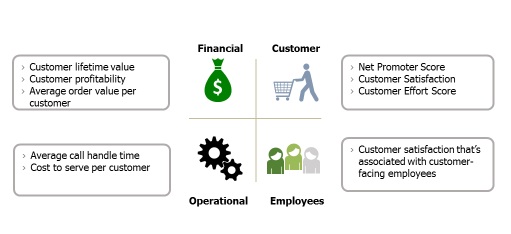Five Ideas to Address the CX Naysayers in Your Organization.
“We have seen the enemy and he is us.”
This statement came to mind as I talked with a colleague who was challenged with the lack of progress at convincing his organization to get on the CX bandwagon. Interestingly, this statement was paraphrased by comic strip writer Walter Kelly from the original declaration of Commodore Oliver Hazard Perry during the war of 1812, “We have met the enemy and they are ours”. This phrase exemplifies the inter-departmental challenges of improving the customer experience. How often have you thought something like this or worse yet, realized it was the situation within your company?
Many factors may contribute to this feeling of helplessness, defeatism and downright frustration when it comes to making headway towards a better experience. But rather than dwelling on the negative of what inhibits our ability to make change, let’s focus on the positive things we can do to facilitate true CX transformation within our organizations.
First Idea. Friends versus Enemies. Since I used one cliche, I’ll use another, “Keep your friends close and your enemies closer.” Enemies may be too strong a word, so I’ll call them adversaries. Have you identified who in your organization is supportive of the transformation and who is working against it? Who’s an early adopter of your efforts and shares your passion? Who has the attitude, “this too shall pass?” It’s important to identify both groups of individuals so you can gain momentum with your supporters and work to win over the naysayers. The best way to win over your adversaries is to understand their motivation for what’s causing their resistance. Is it financial? Is it concern over the impact of the transformation on their role? Once you uncover the core reason for their resistance you can work to address and overcome it.
Second Idea. Facts versus emotions. For those of us who are passionate about CX, it is sometimes easy to exclaim “How can anyone NOT be for improving CX?” Emotions and perceptions play a part in CX. However, if we’re trying to convince someone who doesn’t share our passion, then facts take priority over emotions. Facts can include data like VOC information, loyalty scores, revenue trends and error ratios. Coupling these with data to demonstrate what the lack of action could do to sales, profit and retention can build an effective case to address concerns from those less passionate than you. A dashboard like the one shown below can help give a complete picture of the organization’s performance. I’ll talk more about dashboards in a future blog.
Third Idea. Results versus Probabilities. Once you’ve collected the facts in step 2, it’s important to demonstrate what improvements have already been done and the impact they are having on the organization. Even if you’re just getting started, seek out small successes that caused you to believe this needs to be a transformation across every function of the organization. Did a team in customer service identify pain points and eliminate those within their control? Did distribution collaborate with marketing to identify upcoming promotions? Is there a shining star that is delivering an exceptional customer experience despite the barriers?
Fourth Idea. Bench-marking versus Speculating. Seek strength in numbers. What are other companies in your industry doing? Are your competitors exploiting your weaknesses? Are you ripe for a market disruptor to create a new product or service? There are plenty of resources available to help you understand what’s happening in your marketplace. Seek these resources out and include this with your findings in step 2 to build the case for CX.
Fifth Idea. Execution versus Procrastination. You can lament the naysayers or celebrate the supporters. Which will it be? The best way to demonstrate how CX can revolutionize an organization’s performance is to make something positive happen! Enlist your supporters to help create a momentum within your organization that can’t be stopped. Celebrate your successes and learn from your failures. Don’t overlook how important small steps can be in making your CX efforts a success.
I am continually amazed that leaders at every level and across multiple functions doubt the positive impacts that effective experience strategies can have on an organization’s performance. It is for many CX professionals a reality that we need to address and solve.
These five ideas aren’t intended to be all inclusive. They represent a framework for how to manage the realities we know exist in experience management. If we address the “elephants in the room,” we can begin making real progress that our customers will appreciate.

